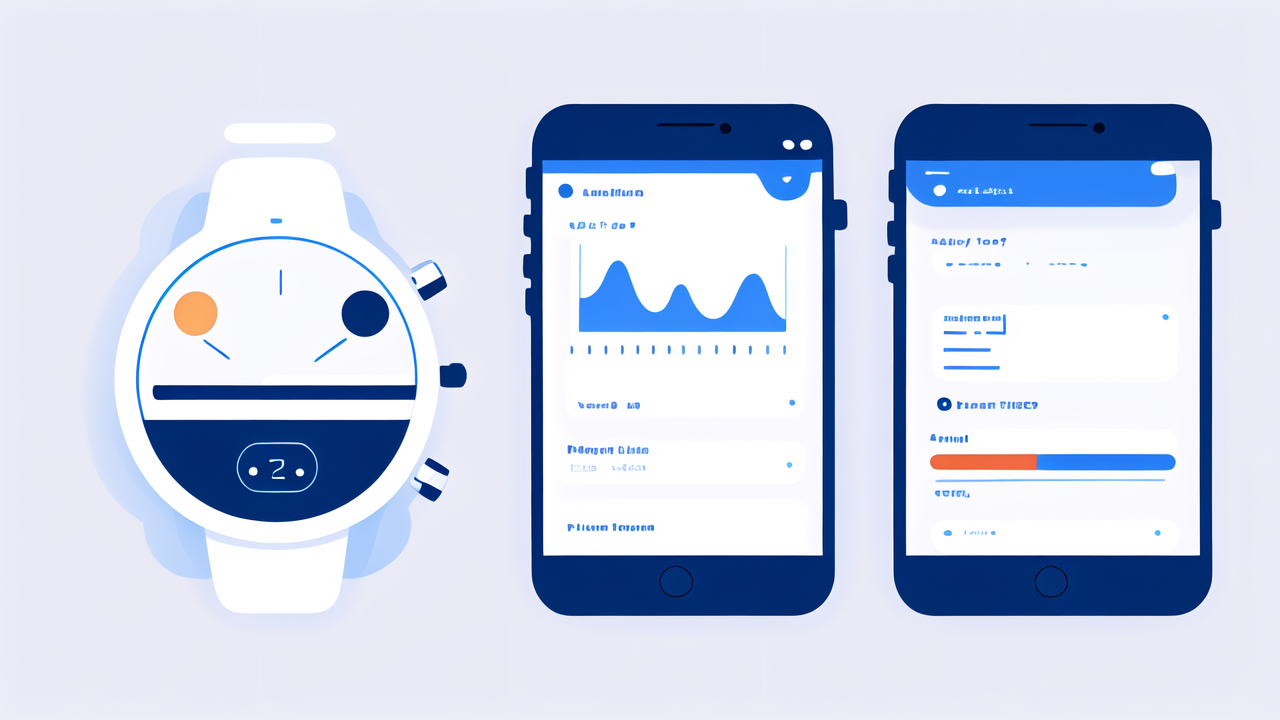Understanding the Smart Watch Market: An Overview
The Evolution of Smart Watches: A Brief History
Smart watches have a rich history, evolving from simple timepieces to high-tech devices. In the early 2000s, tech companies began to explore the potential of watches that do more than just tell time. The game changed with the release of the first true smart watches, which allowed users to check emails and messages without pulling out their phones. Over time, these devices became even smarter, incorporating features like fitness tracking and voice commands. Today, smart watches are not only mini-computers on our wrists but also fashion statements and health monitors.

Key Market Players and Their Offerings
Within the smart watch arena, key market players dominate with innovative designs and tech features. Leading brands like Apple, Samsung, and Garmin offer devices that cater to a broad range of needs. Lesser-known brands like Fossil and Fitbit also provide unique options for fitness and style enthusiasts. Each brand brings something special to the table. Apple's watches integrate seamlessly with iOS devices. Samsung's models offer a mix of health tracking and connectivity. Garmin excels in GPS and endurance sports features. Fossil watches combine classic styling with smart features. Fitbit focuses on health metrics and user engagement. These offerings shape the competitive landscape and consumer choices.
Market Growth and Consumer Adoption Trends
Smart watches have ramped up in the tech market. Their growth is fast and steady now. More people are adopting them for their daily needs. This trend touches all age groups in the U.S. and beyond. Reasons include health tracking and staying connected. Sales figures show more people buy smart watches each year. Price drops and tech upgrades fuel this trend. Brands are working to meet diverse consumer needs. They are making watches for sport, fashion, and more. This keeps the market growing and changing. It's clear: smart watches are here to stay in our digital world.
The Impact of Smart Watches on Lifestyle and Productivity
Enhancing Daily Operations with Smart Technology
Smart watches do more than tell time. They sync with phones for easy access to apps and notifications. This tech helps manage schedules and set reminders throughout the day. Features like voice commands and touchscreens make tasks quicker. They can control smart home devices with a tap. People rely on these gadgets to stay on top of their busy lives. They prove useful for tracking steps and monitoring heart rates too. Wearers can respond to messages without reaching for their phones. These watches blend tech with daily needs smoothly.
Personalization and Lifestyle Tracking Features
Smart watches offer various personalization options to fit any lifestyle. Users can customize watch faces and alerts to reflect their style and needs. With lifestyle tracking features, these watches monitor health metrics like heart rate and sleep patterns. They also track fitness activities, such as steps taken, calories burned, and exercise duration. This data can set personal goals and monitor progress over time. Some watches even offer stress tracking and mindfulness exercises to enhance well-being. By integrating with apps, smart watches provide insights into daily habits and suggest lifestyle improvements. These features make smart watches a central part of a proactive health and fitness regimen.
Productivity Boosts in the Workplace
Smart watches are revolutionizing the workplace. They sync with calendars for meeting alerts. Their apps streamline task management and communication. Remote work becomes easier with instant notifications. They encourage wellness with reminders to move. You can also dictate responses to messages. Smart watches are like having a personal assistant on your wrist.
Purchasing a Smart Watch: Considerations and Strategies
Important Features to Look for in a Smart Watch
When shopping for a smart watch, pay attention to these key features:
- Display Quality: Look for high-resolution screens.
- Battery Life: Longer battery life means less frequent charging.
- Fitness Tracking: Essential for health-conscious users.
- Water Resistance: A must for active lifestyles.
- Compatibility: Ensure it works with your smartphone.
- App Support: More apps offer more functions.
- Design: It should fit your style and comfort.
Choose a watch that meets your daily needs and complements your tech ecosystem.
Navigating the Purchase: Retailers, Online Stores, and Direct Sales
Buying a smart watch can be a bit tricky. There are a few ways to get one. Retail stores let you try on watches. You can see how they look and feel. Online stores may offer more deals. They also have user reviews to read. Direct sales could mean buying from a brand's site. They might offer exclusives or new models first. Always look for a good return policy. This way, you can return it if it's not right. Check for warranty too. It should protect your watch if it breaks. Compare prices across sites to save money. And look for sales or special promos.
The Future of Smart Watches: Upcoming Innovations and Trends
The smart watch industry is always expanding with new tech. Here are upcoming trends. First, we'll likely see more advanced health monitoring features, such as blood sugar levels. Expect these watches to get even thinner and lighter. Battery life will improve, meaning less frequent charging. Integration with other smart devices will become seamless. And we might get more options for customization, from straps to watch faces. Voice assistants will also get better, helping us do more by just speaking to our wrist. Finally, there will be a renewed focus on privacy and security in response to user concerns.




Leave a comment
This site is protected by hCaptcha and the hCaptcha Privacy Policy and Terms of Service apply.